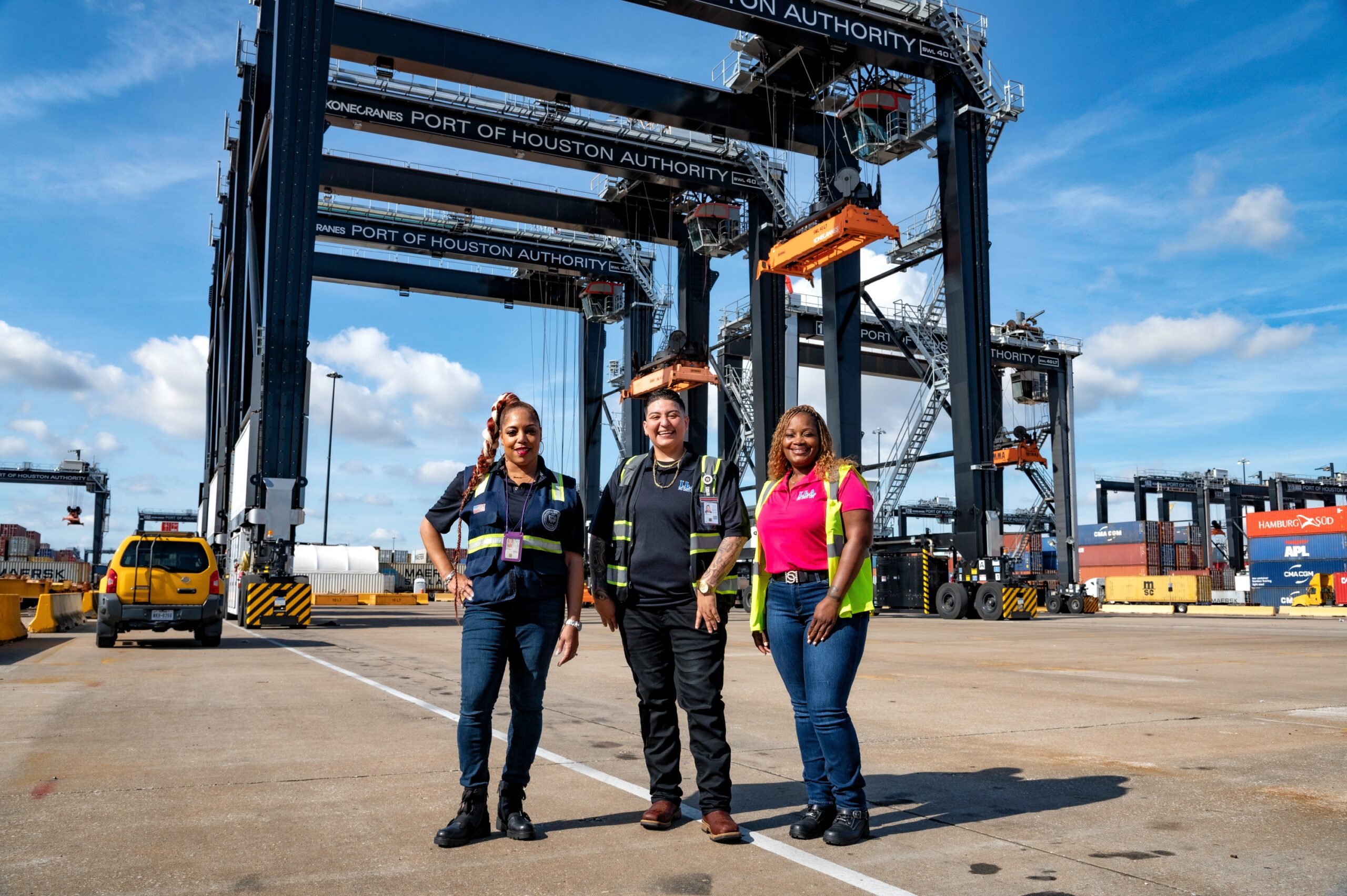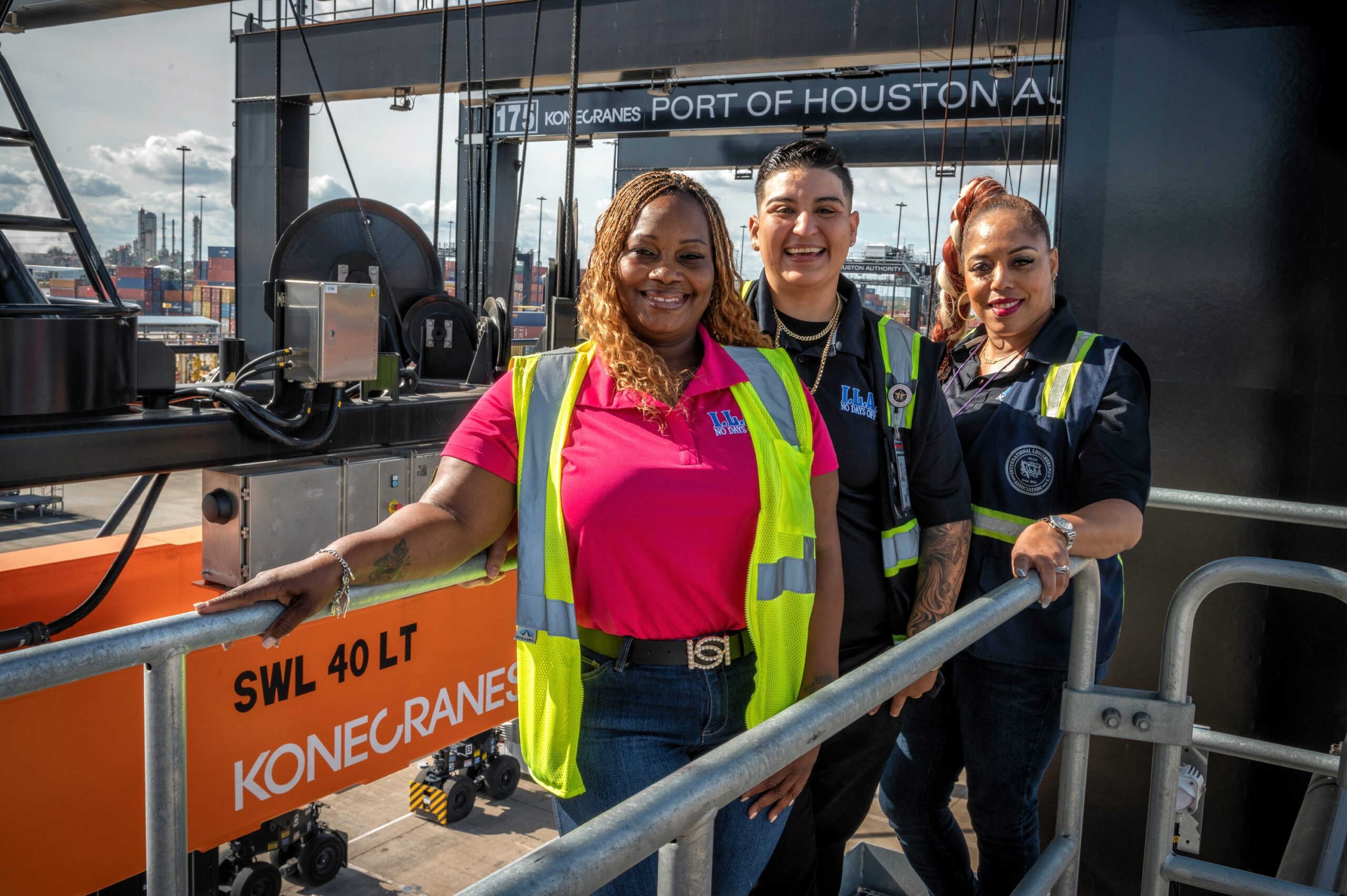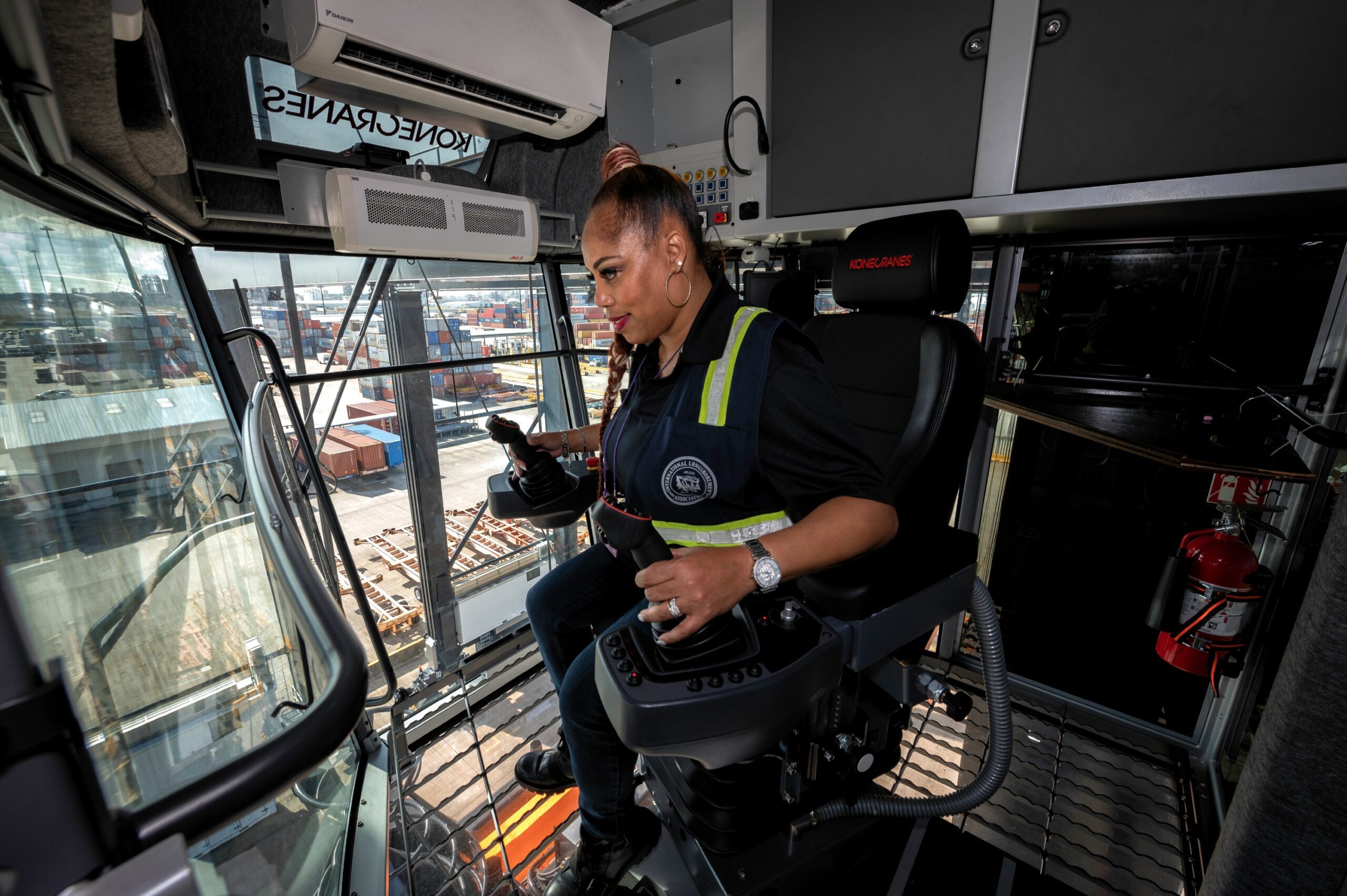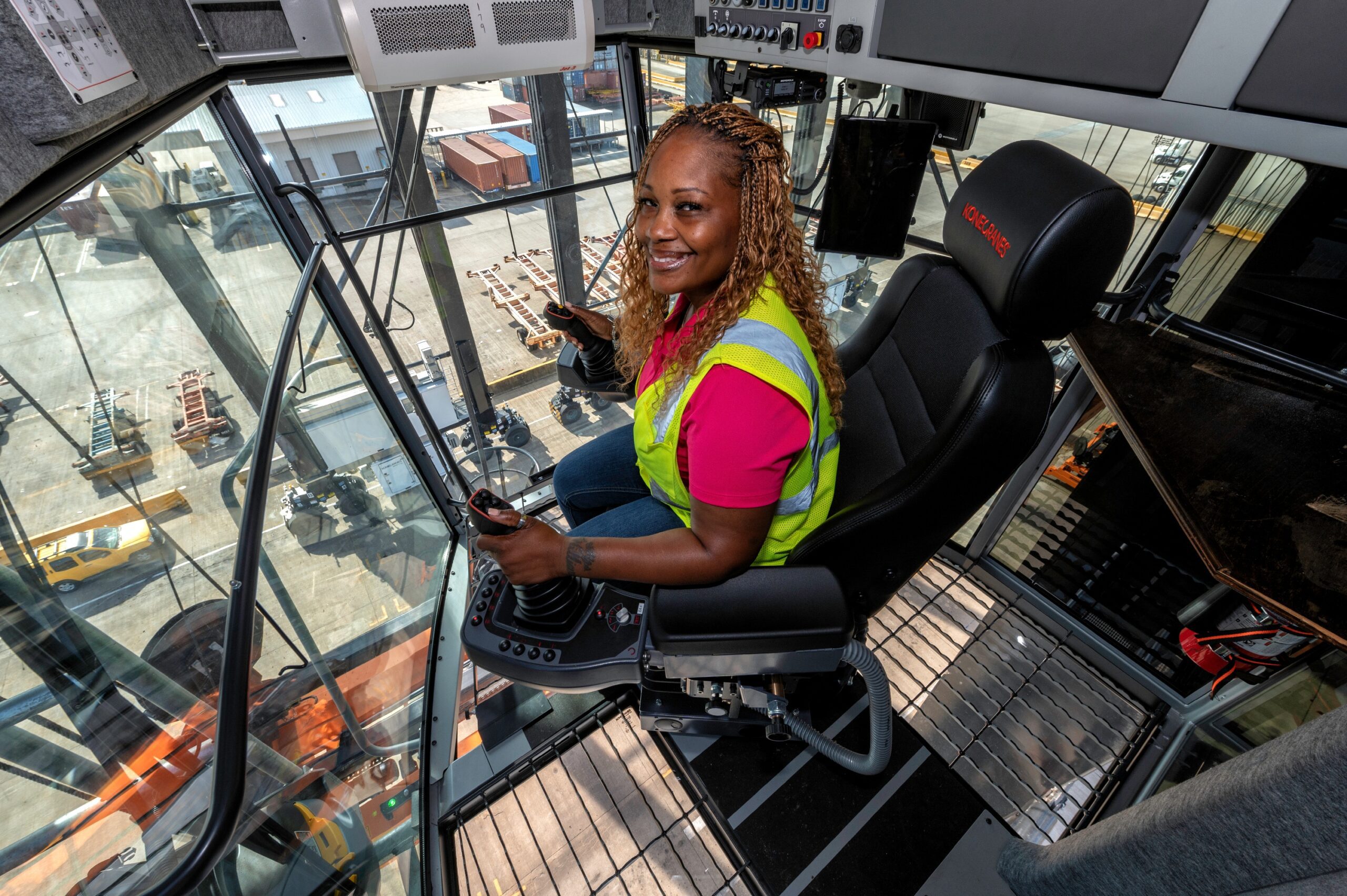
The global supply chain is in a time of evolution. With ships getting larger and cargo increasing, the constant focus on growth is undeniable. More equipment and upgrades to infrastructure will be necessary, but so is a properly trained workforce. Who will be the next generation of maritime workers supplying that manpower to sustain the supply chain? Whether truckers, equipment operators, logistics specialists, longshoremen or crane technicians, these are all key roles that keep operations running efficiently; and the industry needs more of them. A lot more.
Port Houston Helps Expand the Workforce
As a port operator and advocate for the Houston Ship Channel, Port Houston plays a special role in the nonstop dance to operate equipment, move cargo, make space available and process trucks coming through the gates. Port Houston is on the path of expansion, both with the Channel itself as well as with Port infrastructure. The Houston Ship Channel Expansion – Project 11 will widen the Channel from 530’ to 700’ and deepen some upstream segments.
Port Houston is also making enhancements to optimize its terminals and adding cranes and other infrastructure to handle seven million TEUs by 2040. These terminal enhancements alone will generate more than 32,000 additional jobs. “The limited availability of labor has led us through a path of discovery; analyzing better ways to improve operations and remove disparity. We are working diligently with our partners in labor and training to ensure that the port’s goal to increase capacity is met with the necessary labor to sustain that growth,” said Ryan Mariacher, director of container terminals at Port Houston.

Working with the ILA and WGMA
Port operations along with the International Longshoremen Association (ILA) and the West Gulf Maritime Association (WGMA) have recently developed opportunities to streamline the certification process for ship-to-shore crane operators and RTG operators, among other roles, through added trainers and investments in simulation equipment to better equip trainees in the program.
“Since revamping the RTG training program on September 1, 34 new RTG operators have been certified, increasing the pool by 20%.” said Mariacher. “We have done this not by cutting corners – everyone going through the program must still meet the thresholds and requirements to be certified – but by finding ways to streamline and utilize equipment to train individuals and leveraging our veteran operators to supplement the training program.”
West Gulf Maritime Association operates two crane simulators, one of which Port Houston invested in back in 2018 to improve training capabilities. The WGMA’s training arm supports a variety of certifications including safety, longshore skills, yard tractor, supervisory skills, and STS/RTG operation.
The ILA, the union of maritime workers in North America, supplies the necessary labor to move cargo and represents more than 65,000 longshoremen on the Atlantic and Gulf Coasts, Great Lakes, major U.S. rivers, Puerto Rico, and Eastern Canada. At Port Houston, consistent communication with the area hiring halls of Local 24, Local 28, and Local 1351 as well as the ILA District Office has created a strong bond that enables both organizations to work smarter and faster despite the challenges. More than 200 people are hired daily to work at both container terminals and additional workers are added as demand requires.
First Women to Complete the RTG Certification Program
The ILA is also reaching great milestones as they continue to recruit workers to complete ship-to-shore (STS) crane and RTG operator certification. Just this October, Samantha Piña became the first woman in the history of the ILA local 28 to be certified as an RTG operator.

“The program is rigorous. It requires nerves of steel, but most of all determination to complete it. Workers looking to move up the ranks must go through a vetting process and have accumulated hours of experience.” said Tim Harris, Executive Vice President of the ILA local 28.
Samantha Piña has been working in the ILA for seven years, and she waited three years to enroll in the program. “You need 2,000 hours of hands-on experience. I worked with heavy machinery, and on top loaded, heavy-lift, pencil, and empty yard jobs. I also had to complete a minimum of 250 hours of ‘on the seat’ training and take a written test to get to this point.”

More women have also enrolled and completed the program since, noting the impact of making a commitment to push forward. Chataria Biscoe has been working with the ILA local 28 for 17 years and originally came to the ILA with her father to work. After her father passed and the pandemic hit, she knew that she wanted more for her career. “I felt like everything finally fell into place once I started the RTG operator certification process. Although I was nervous and felt pressure at first, I was encouraged to keep going to pursue my dream,” she states. “Now I have a great sense of accomplishment and can be a role model for the next women.”

Tasha Williams also went through the certification process and felt overjoyed when she completed the rigorous test. She states, “I started as a truck driver eight years ago and didn’t think I would be where I am today. Putting in the long hours of work, ride-alongs, simulator trainings, and several weeks of monitored training has been worth it. Although this is a male-dominated field, I want to inspire the next generation of workers.”